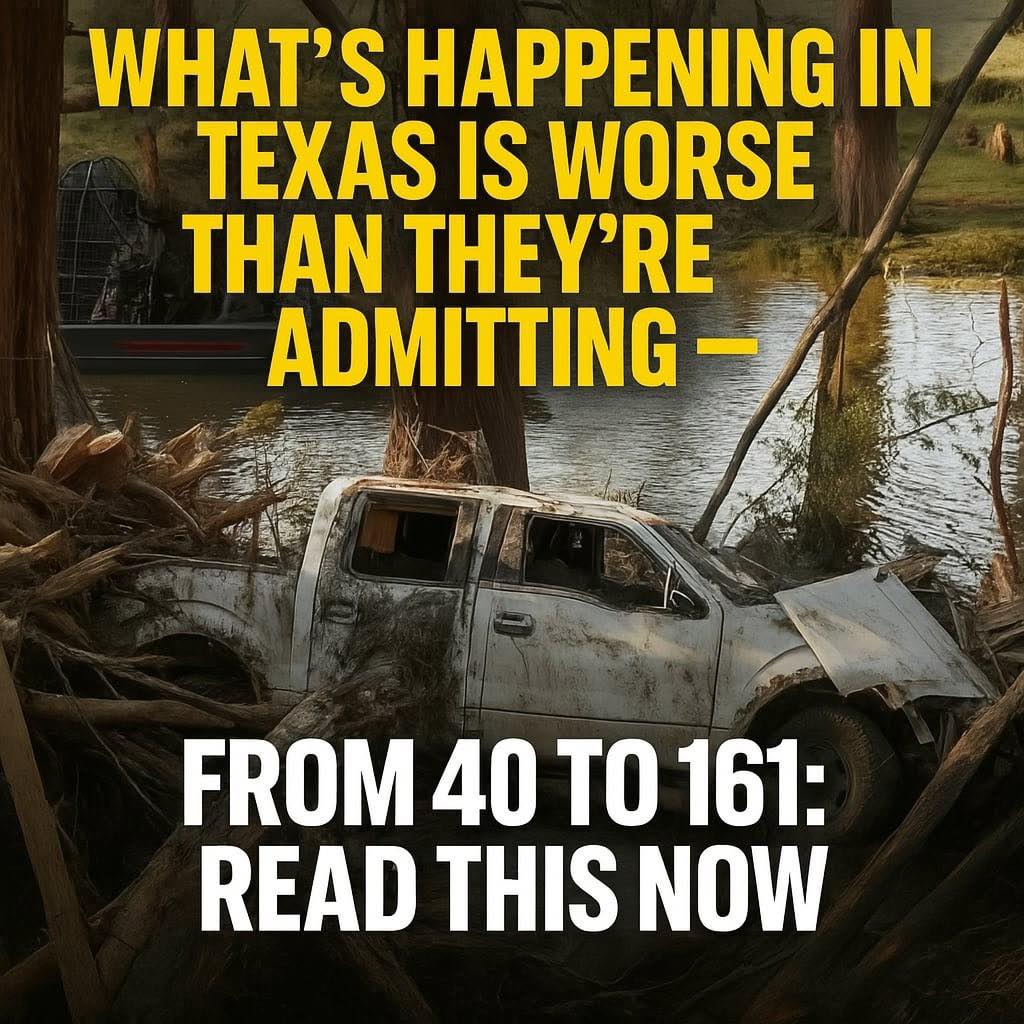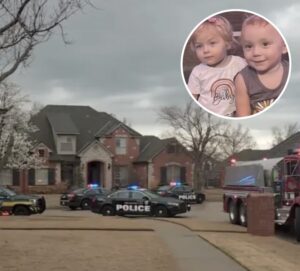BREAKING: Texas Flood Crisis Just Took a Darker Turn…See more
The true extent of the catastrophic flash flooding in Texas continues to unfold in heartbreaking detail, with the state now grappling with one of the deadliest natural disasters in its history. On Tuesday, Governor Greg Abbott announced a dramatic and alarming rise in the number of people reported missing — surging to 161, a figure that has quadrupled overnight from the previous count of 40. Simultaneously, the official death toll has climbed to 109, a staggering number that now surpasses the devastation caused by Hurricane Harvey in 2017.
Standing before reporters after conducting an aerial survey of the flood-ravaged landscape, Governor Abbott expressed the gravity of the situation. “We will not stop until every missing person is accounted for,” he stated firmly. He clarified that the updated missing persons figure reflects not only formal reports but also calls and pleas from concerned neighbors, friends, and family members who still haven’t been able to contact their loved ones. And, he added somberly, the number may continue to rise in the coming days.
**Kerr County and Camp Mystic: A Devastated Epicenter**
The epicenter of this unprecedented natural disaster is Kerr County, a once-picturesque region now reduced to wreckage and sorrow. According to officials, 87 of the 109 confirmed deaths have occurred in Kerr County alone. Among them are at least 27 victims from Camp Mystic, a cherished all-girls Christian summer camp located along the banks of the Guadalupe River.
Known for its strong sense of community, faith-based activities, and nature-filled retreats, Camp Mystic has now become a focal point of grief. On the night of July 4, a wall of water surged through the region after an extreme storm dumped over 15 inches of rain in a matter of hours, pushing the Guadalupe River more than 30 feet above its normal levels.
Five campers remain missing, and around-the-clock search operations are ongoing, involving ground crews, helicopters, search dogs, and sonar equipment. Rescue workers describe a scene of utter devastation: overturned school buses, twisted trees, collapsed cabins, and a riverbank that no longer resembles anything familiar.
“It’s like nothing we’ve ever seen,” said one exhausted first responder, who has been part of the rescue efforts since the floodwaters hit. “You train for emergencies, but no amount of training prepares you for this kind of scale. It’s just overwhelming.”
**Mounting Public Pressure and Questions Over Warnings**
As rescue and recovery continue, public scrutiny has begun to mount regarding the state’s emergency response and the timing of flood alerts. Many residents, including those near Camp Mystic, say they received little to no warning before the water rose. Some families have expressed anger that no evacuation order was issued for the camp, despite meteorologists forecasting extreme rainfall days in advance.
During Tuesday’s press conference, reporters pressed Governor Abbott on accountability, specifically asking whether state or local leadership bore any responsibility for the delayed alerts that may have cost lives. The governor responded defensively: “The word choice of losers is to ask, ‘Who’s to blame?’ We’re focused on saving lives. We’ve got this.”
His comment sparked mixed reactions across social media and within the communities most affected, where emotions are raw and questions about preparedness and communication are growing louder.
**A State in Mourning**
In towns across Texas, flags fly at half-staff, and makeshift memorials have begun to appear—crosses, flowers, and photographs of the missing or deceased. Vigils are being held in churches, schools, and community centers, offering comfort to grieving families and praying for those still unaccounted for.
While Texas is no stranger to extreme weather, this flood has struck a particularly cruel blow. It has upended families, erased entire neighborhoods, and left thousands displaced. For those who have lost children, siblings, parents, or friends, the road to healing will be long and painful.
And yet, amid the rubble, stories of heroism and resilience continue to emerge — from neighbors rescuing each other on boats, to volunteers distributing food and clothes, to first responders refusing to rest until every last missing person is found.
But as the water recedes and the reality of the destruction settles in, one thing remains clear: this disaster will leave a permanent mark on the people of Texas — not just in memory, but in policy, planning, and the urgent conversations now beginning about how to prevent a tragedy like this from happening again.







Post Comment